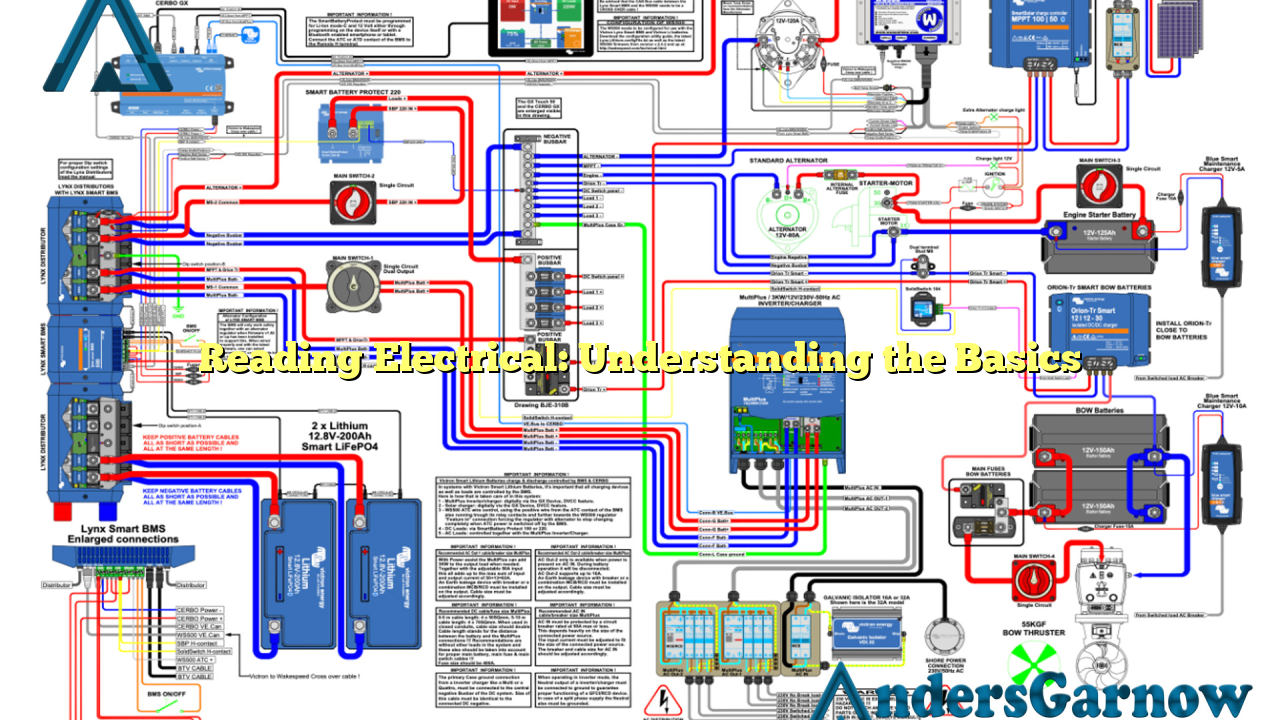Hello there, welcome to this informative article about reading electrical! In today’s digital age, electrical knowledge is becoming increasingly important. Whether you’re a homeowner, a professional electrician, or simply someone interested in understanding how electricity works, this article will provide you with a comprehensive guide on reading electrical measurements, safety precautions, and more. So, let’s dive into the world of electrical reading!
1. What is Electrical Reading?
Electrical reading refers to the process of interpreting and understanding measurements related to electrical systems. It involves reading and analyzing various parameters such as voltage, current, resistance, and power to assess the health and functionality of electrical circuits and devices.
One of the key aspects of electrical reading is the ability to use different types of measuring instruments, such as multimeters, clamp meters, and oscilloscopes. These tools help electricians and technicians measure, monitor, and troubleshoot electrical systems effectively.
Advantages of Electrical Reading
| Advantages | Disadvantages |
|---|---|
|
|
2. Voltage Reading
Voltage is the measurement of electrical potential difference between two points in a circuit. It is crucial to understand voltage readings as they help determine whether a circuit is properly functioning or if there are any issues such as voltage drops or fluctuations.
When reading voltage, it’s important to use a multimeter set to the appropriate voltage range. The red lead of the multimeter is connected to the positive terminal, and the black lead is connected to the negative terminal. The display of the multimeter will then provide the voltage reading.
3. Current Reading
Current reading involves measuring the flow of electric charge in a circuit. It is measured in amperes (A) and is essential for determining the load on a circuit and ensuring devices receive the required current to function correctly.
To measure current, a multimeter set to the current mode is used. The multimeter is connected in series with the circuit, ensuring that the current passes through the meter. The display will then show the current reading.
4. Resistance Reading
Resistance reading helps assess the opposition to the flow of electric current in a circuit. It is measured in ohms (Ω) and is crucial for diagnosing faulty components, identifying open or short circuits, and calculating power consumption.
To measure resistance, a multimeter set to the resistance mode is used. The probes are placed across the component or circuit being measured, and the multimeter will display the resistance value.
5. Power Reading
Power reading involves measuring the rate at which electrical energy is consumed or produced in a circuit. It is essential for understanding the energy usage of appliances, calculating electrical bills, and ensuring the capacity of electrical systems is not exceeded.
To measure power, a wattmeter or a multimeter with power measurement capabilities can be used. The device is connected to the circuit or appliance, and the power reading is displayed.
6. Safety Precautions
When working with electricity, it is crucial to prioritize safety. Here are some essential safety precautions to keep in mind:
- Always wear appropriate personal protective equipment (PPE) like gloves and safety glasses.
- Ensure the circuit or device is properly shut off before making any measurements.
- Avoid working in wet or damp conditions.
- Never touch exposed wires or components with bare hands.
- Use insulated tools specifically designed for electrical work.
7. Alternatives to Reading Electrical
While reading electrical measurements is essential for accurate analysis and troubleshooting, there are alternatives available for those who may not have the technical expertise or tools required. Electricians and technicians are trained professionals who can provide comprehensive electrical services, including measurement readings, maintenance, and repairs.
8. Frequently Asked Questions (FAQ)
Q: Can I measure AC and DC voltage with the same setting on a multimeter?
A: No, multimeters have separate settings for AC and DC voltage measurements. Make sure to choose the correct setting based on the type of voltage you want to measure.
Q: Are there any risks of electric shock while reading electrical measurements?
A: Yes, there is a risk of electric shock if proper safety precautions are not followed. Always prioritize safety and take necessary precautions to minimize risks.
Q: Do I need to be an electrician to read electrical measurements?
A: While it is beneficial to have electrical knowledge, anyone can learn to read basic electrical measurements with proper guidance and education.
Conclusion
In conclusion, understanding electrical reading is crucial for maintaining electrical systems, troubleshooting issues, and ensuring safety. By familiarizing yourself with voltage, current, resistance, power readings, and following safety precautions, you can gain the necessary knowledge to handle electrical measurements effectively. Whether you’re a homeowner or a professional, electrical reading skills are invaluable in today’s technologically advanced world.

